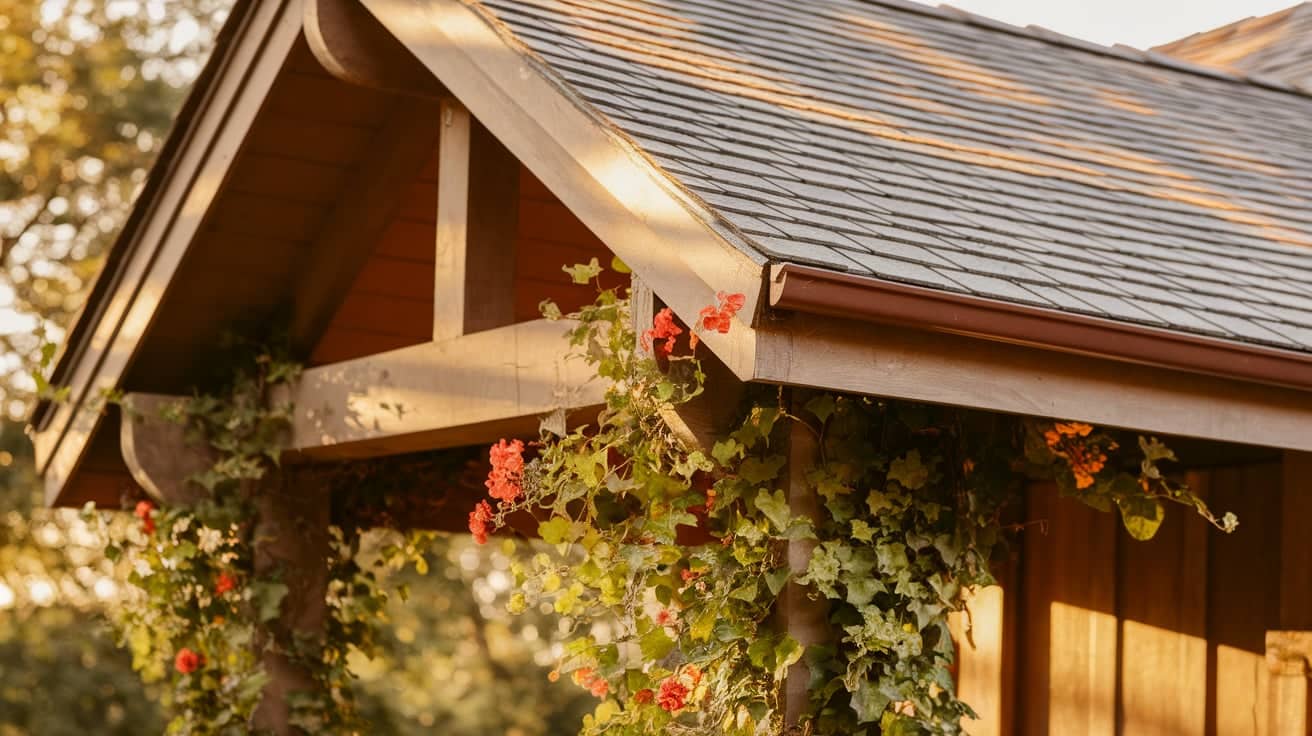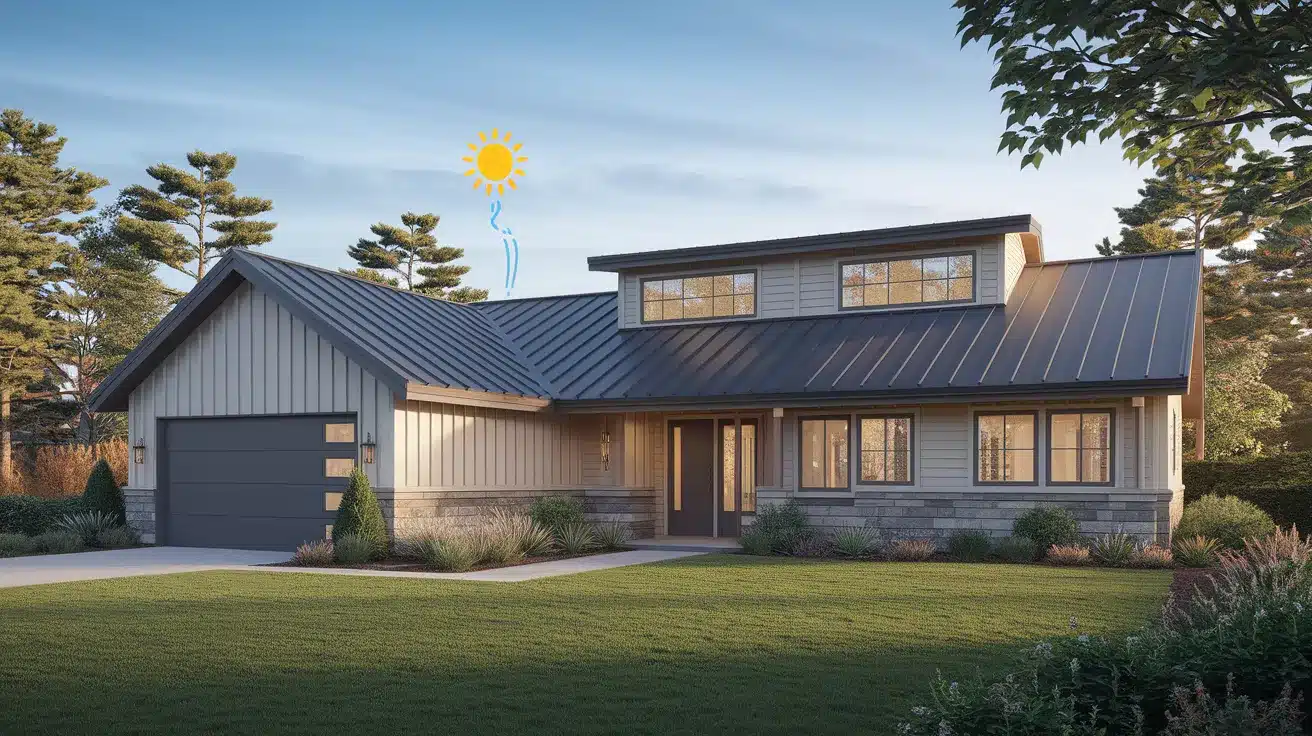Have you seen those modern homes with sharp, single-slope roofs that stand out in any neighborhood?
These skillion roofs catch your eye right away.
I know how hard it can be to choose the right roof style for your home. You want something that looks good but also works well. It’s tough when all the options start to blur together.
But what if you could add a modern touch to your home while improving rain runoff, increasing living space, and reducing upkeep?
I’m going to show you how skillion roofs can fix these issues while giving your home a fresh look.
Let’s look at why these simple yet striking roofs might be your best choice.
What is a Skillion Roof? Understanding the Basics
A skillion roof features a single flat surface that slopes in one direction. The pitch can range from slight to steep, with one high wall and one lower wall supporting the ends. Its clean, straight lines create a simple, modern look that many homeowners find attractive.
Unlike traditional gable roofs that have two slopes meeting at a peak, or hip roofs with slopes on all four sides, skillion roofs use just one plane. This makes them simpler in structure and faster to build. The single slope also helps water and snow run off quickly in one direction.
You might also hear skillion roofs referred to by other names. Many builders call them shed roofs, while architects often use terms like mono-pitched roofs or lean-to roofs. All these names refer to the same basic design: a roof with a single sloping plane.
Which Material Is Best for Your Skillion Roof?
When choosing the right material for your skillion roof, it’s essential to understand how each option performs in terms of durability and purpose. Here’s a quick comparison.
| Material | Purpose | Lifespan |
|---|---|---|
| Metal Roofing | Quick water shedding and heat reflection | 40–70 years |
| Asphalt Shingles | Budget-friendly option with decent longevity | 15–30 years |
| EPDM Rubber Membrane | Seamless waterproofing for low-slope designs | 20–30 years |
| TPO/PVC Membrane | Energy-efficient waterproofing | 20–30 years |
| Standing Seam Metal | Premium water shedding with hidden fasteners | 50+ years |
| Corrugated Metal | Economical metal option with texture | 30–50 years |
Selecting the ideal material depends on your budget, climate, and long-term goalsbut understanding these basics ensures your skillion roof performs at its best for decades to come.
Design Variations: Analyzing Different Skillion Roof Styles
When looking at homes with skillion roofs, you’ll notice that this simple concept can take many forms. Let’s examine the primary types you may encounter or consider for your own home.
1. Standard Skillion Roof
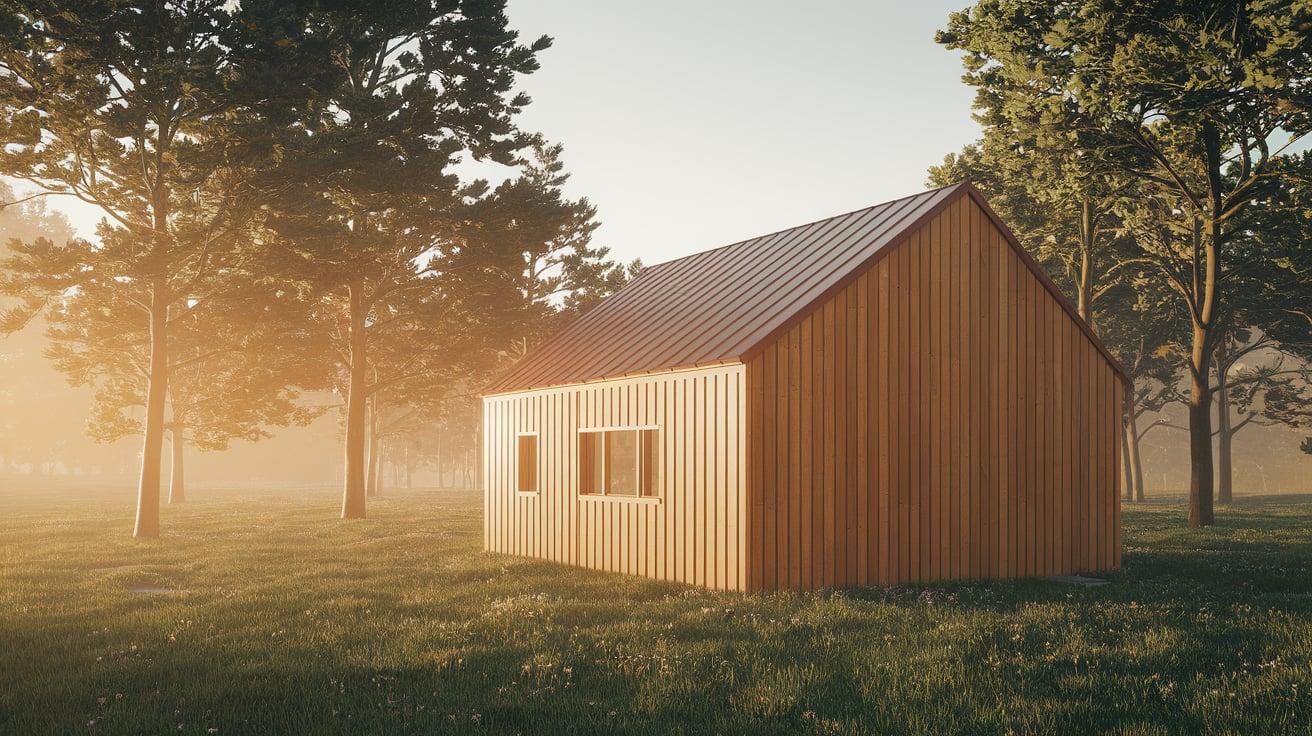
This is the most basic version: a single flat surface that slopes in one direction.
- Clean, simple look that works well for modern homes
- Often used for smaller buildings, extensions, or porches
- The slope can be adjusted based on climate needs and style preferences
2. Butterfly Roof
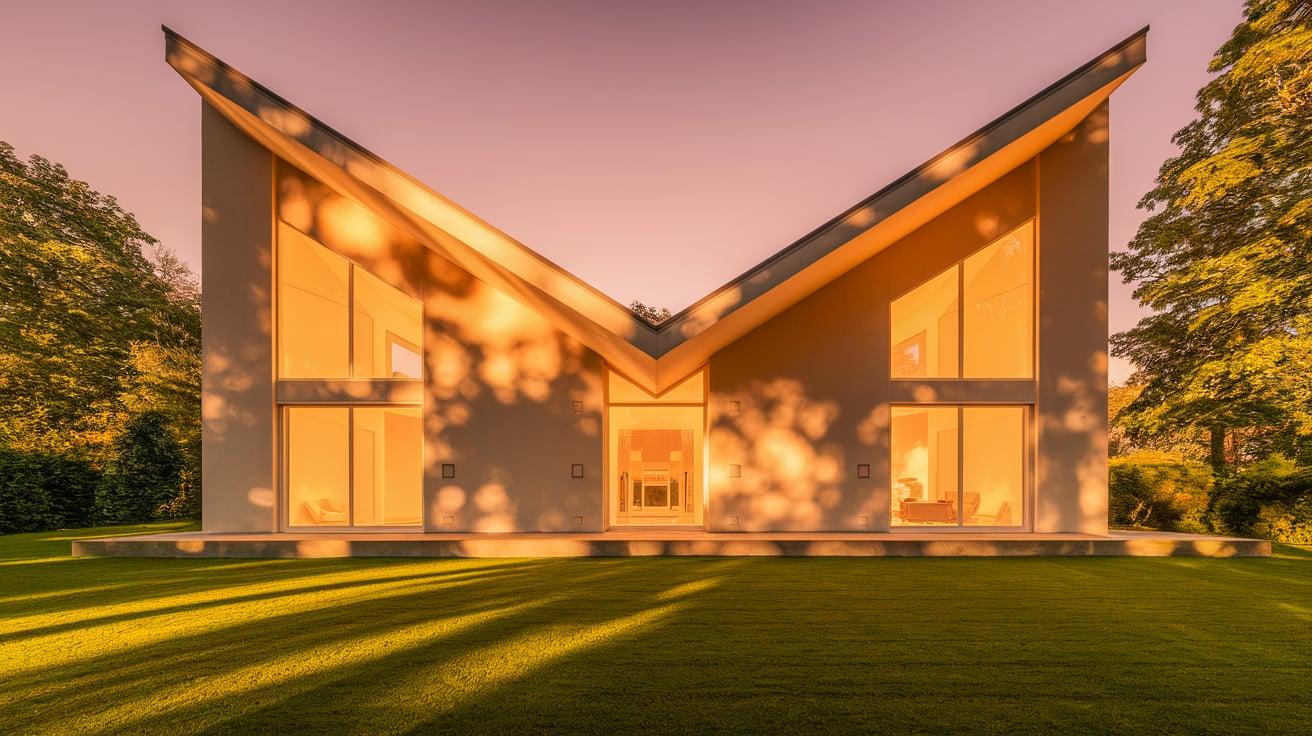
This style uses two skillion roofs that slope downward toward the center, creating a V-shape.
- Creates a striking, open feel with higher side walls
- The center valley collects rainwater, making it good for water saving systems
- Allows for larger windows on the high sides for more natural light
3. Curved Skillion Roof
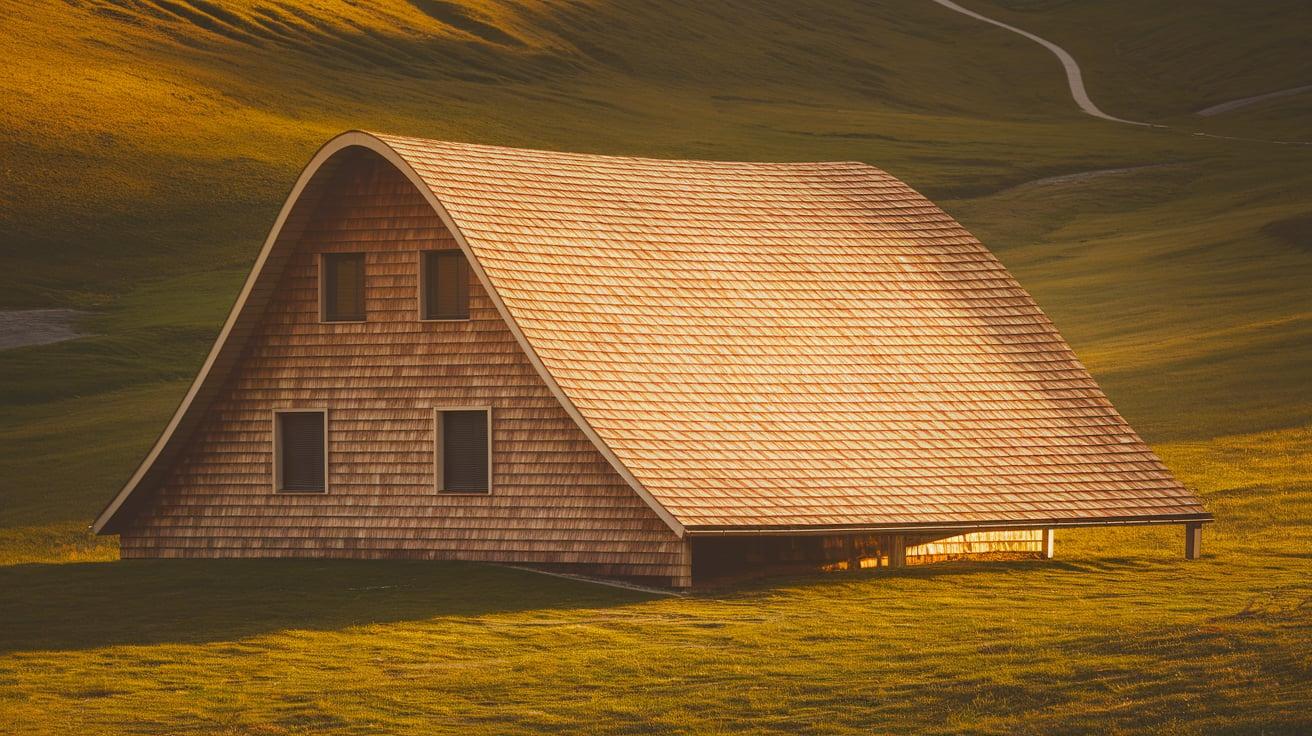
A more gentle take on the standard design, with a curved rather than straight slope.
- Softer look that can blend with more traditional homes
- Often needs special materials that can bend with the curve
- Creates unique ceiling spaces inside the home
4. Split Skillion Roof
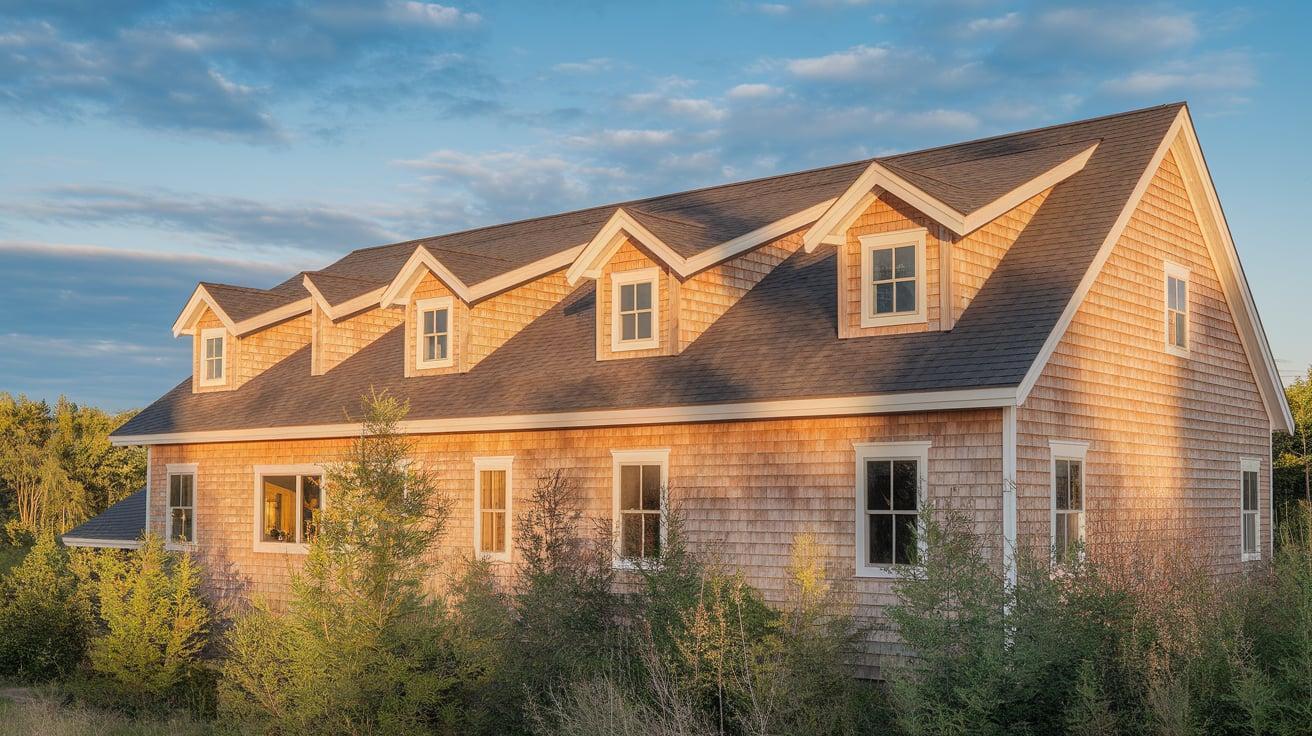
This design breaks up the roof into sections at different heights.
- Creates visual interest and can help break up the mass of larger homes
- Allows for clerestory windows between roof sections
- Gives more options for interior ceiling heights in different rooms
5. Multiple Skillion Roof
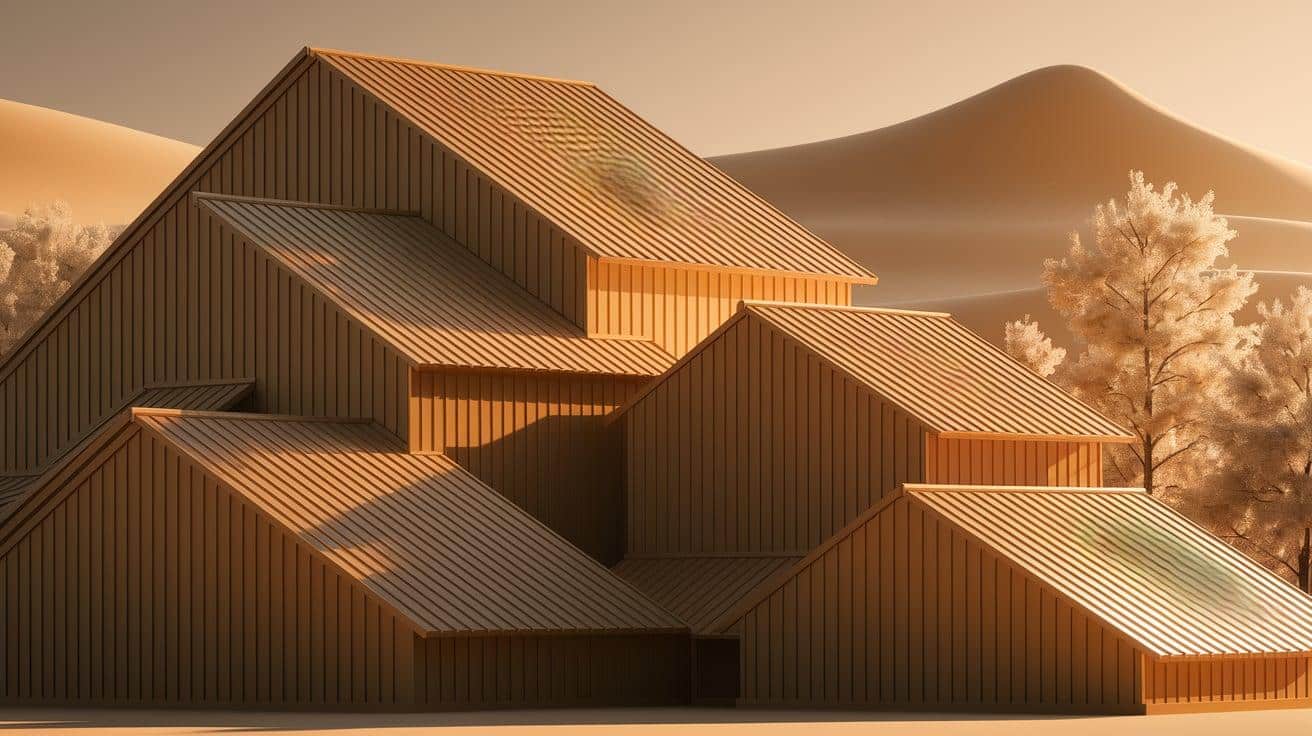
For larger or more complex buildings, several skillion sections can be combined.
- Works well for homes with distinct wings or sections
- Each section can have its own pitch and direction
- Creates a cohesive yet varied roofline that stands out
Advantages of Skillion Roofs: Why Choose This Design?
- Modern beautiful: The sharp angle and clean lines of a skillion roof give homes a fresh, updated look. This simple design complements modern and tiny home styles perfectly, making your house stand out in the neighborhood.
- Efficient Water Drainage: The steep slope moves rainwater and snow off your roof quickly. This helps avoid leaks and water damage that often happen with flatter roofs, saving you money on repairs over time.
- Cost-Effective Construction: Skillion roofs require fewer materials and are less time-consuming to build compared to complex roof designs. The simple structure results in faster installation, lower labor costs, and approximately 10-15% savings compared to traditional roofs.
- Solar Panel Compatibility: The single, angled surface creates an ideal spot for solar panels. When positioned correctly, this setup can increase energy output by up to 30% compared to panels on conventional roofs.
- Increased Ceiling Height: The high wall design enables taller ceilings and larger windows. This brings in more natural light, improves airflow, and can make rooms feel up to 25% larger without altering the floor space.
Potential Drawbacks: Considerations Before Installation
- Limited Attic Space: The sloped design leaves little to no room for a traditional attic. This reduces your storage options, meaning you may need to find alternative locations to store seasonal items and equipment.
- Wind Resistance: The high profile can catch strong winds, creating up to 25% more stress on the structure. Homes in storm-prone areas will require additional bracing and stronger fasteners to remain secure.
- Design Limitations: Skillion roofs don’t match all home styles. They can look out of place on classic colonial, Tudor, or Craftsman houses, potentially affecting resale value in some neighborhoods.
- Uneven Wear: The side facing the sun may age faster than the shaded side. This uneven exposure can lead to the need to replace roofing materials up to 20% sooner on the sun-facing portion.
- Weather Noise: The steep, single-layer design can amplify the sound of rain and hail hitting the roof. Without proper insulation, this noise can be up to 15 decibels louder than with traditional roof designs.
Skillion Roofs in Sustainable Architecture
Skillion roofs have become a key feature in green building design. Their simple, sloped surface makes them ideal for capturing and directing rainwater into collection systems, helping homes save up to 1,500 gallons of water annually.
The design also opens up wall space for larger windows, especially with split skillion styles that allow for clerestory windows, which can cut lighting needs by up to 30% during daylight hours. When oriented correctly, skillion roofs also contribute to passive temperature control.
South-facing slopes (in the Northern Hemisphere) can capture winter sun for warming, while steep overhangs block summer heat.
This smart positioning can reduce heating and cooling costs by 15-25%, making the skillion roof not just a style choice but a practical one for homeowners wanting to lower their carbon footprint and utility bills.
Wrapping It Up
Skillion roofs offer more than just good looks. Their single-slope design effectively handles water runoff, is less expensive to build, works well for solar panels, and creates taller, brighter interior spaces.
Although they offer less storage space and may require additional support in windy areas, the benefits often outweigh these limitations.
From standard single slopes to butterfly designs and split levels, there are many ways to use this roof style. With proper material choice, whether it be metal for longevity, asphalt for affordability, or membranes for low-slope applications, a skillion roof can be both practical and striking.
As home designs move toward greener options, this simple roof style proves that good function and clean design can go hand in hand.
Frequently Asked Questions
Are Skillion Roofs Expensive?
Skillion roofs typically cost 10-15% less than traditional roof designs. Their simple structure requires fewer materials and less labor time..
What Is the Most Expensive Roof Style?
Mansard roofs are typically the most expensive style due to their complex design, steep double slopes, and the additional materials required for construction and finishing.
How Much Fall Does a Skillion Roof Need?
A skillion roof requires a minimum pitch of 1/12 (1 inch rise per 12 inches).

